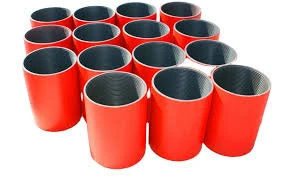- Afrikaans
- Albanian
- Amharic
- Arabic
- Armenian
- Azerbaijani
- Basque
- Belarusian
- Bengali
- Bosnian
- Bulgarian
- Catalan
- Cebuano
- Corsican
- Croatian
- Czech
- Danish
- Dutch
- English
- Esperanto
- Estonian
- Finnish
- French
- Frisian
- Galician
- Georgian
- German
- Greek
- Gujarati
- Haitian Creole
- hausa
- hawaiian
- Hebrew
- Hindi
- Miao
- Hungarian
- Icelandic
- igbo
- Indonesian
- irish
- Italian
- Japanese
- Javanese
- Kannada
- kazakh
- Khmer
- Rwandese
- Korean
- Kurdish
- Kyrgyz
- Lao
- Latin
- Latvian
- Lithuanian
- Luxembourgish
- Macedonian
- Malgashi
- Malay
- Malayalam
- Maltese
- Maori
- Marathi
- Mongolian
- Myanmar
- Nepali
- Norwegian
- Norwegian
- Occitan
- Pashto
- Persian
- Polish
- Portuguese
- Punjabi
- Romanian
- Russian
- Samoan
- Scottish Gaelic
- Serbian
- Sesotho
- Shona
- Sindhi
- Sinhala
- Slovak
- Slovenian
- Somali
- Spanish
- Sundanese
- Swahili
- Swedish
- Tagalog
- Tajik
- Tamil
- Tatar
- Telugu
- Thai
- Turkish
- Turkmen
- Ukrainian
- Urdu
- Uighur
- Uzbek
- Vietnamese
- Welsh
- Bantu
- Yiddish
- Yoruba
- Zulu
Understanding the API Standards for Tubing and Casing Specifications in Oil and Gas Industry
Understanding API Tubing and Casing Charts
The oil and gas industry relies heavily on various standards to ensure safety, efficiency, and compatibility of equipment. One of the pivotal standards is set by the American Petroleum Institute (API), particularly concerning tubing and casing charts. These charts are essential tools for engineers and operators in the industry, guiding them in selecting the appropriate sizes, weights, and types of tubing and casing for oil and gas production.
What Are Tubing and Casing?
Before delving into the charts, it’s important to understand what tubing and casing are. Tubing is the pipe that brings oil and gas from the reservoir to the surface. It’s crucial that tubing can withstand the pressure and corrosive environments typically found downhole. Casing, on the other hand, is a larger pipe installed in the well to maintain the well’s integrity and prevent the sides from collapsing. Casing also protects the groundwater and creates barriers against the escape of formation fluids.
The Role of API Standards
API standards provide a uniform framework that ensures the products used in oil extraction meet specific performance criteria. The tubing and casing charts, provided by the API, contain vital information such as the outer diameter, inner diameter, weight, and material specifications of various tubing and casing types. These charts help engineers make informed decisions regarding the selection of materials based on the geological and operational conditions of the well.
Key Components of API Tubing and Casing Charts
1. Dimensions The charts list dimensions such as outer diameter (OD) and inner diameter (ID) which are crucial for understanding how the tubing and casing will fit in the wellbore and connect with other components.
api tubing and casing chart

2. Weights Weight per unit length is another important parameter. It affects not only the installation process but also the pressure ratings and overall structural integrity of the casing and tubing.
3. Specifications The charts specify various grades of steel, each tailored for specific strength and durability needs. For instance, higher grades are typically used in deeper wells due to the increased pressure and temperature conditions.
4. Pressure Ratings Different tubing and casing types are rated for specific pressures. The charts provide information on the maximum operational pressures that each type can handle, which is essential for preventing failures during operation.
Selecting Tubing and Casing
When selecting tubing and casing, engineers reference these charts to ensure they choose materials that can withstand the operational demands of specific drilling programs. Factors such as the depth of the well, temperature, expected pressures, and the properties of the produced fluids all influence the choice of tubing and casing materials.
Moreover, compliance with API standards not only promotes safety and efficiency but also ensures that all components of the system will work together seamlessly. This interoperability is crucial, especially in a complex environment where many different components must function correctly under extreme conditions.
Conclusion
API tubing and casing charts are indispensable tools in the oil and gas industry. By providing detailed specifications on dimensions, weights, grades, and pressure ratings, these charts enable professionals to make informed choices that enhance safety and efficiency in drilling operations. Understanding these charts ensures that engineers can select the appropriate materials for the challenging environments found in oil and gas extraction, ultimately leading to successful project outcomes and a reduced risk of failures during production. As the industry evolves, continued adherence to API standards will remain a cornerstone of operational excellence.
-
Tubing Pup Joints: Essential Components for Oil and Gas OperationsNewsJul.10,2025
-
Pup Joints: Essential Components for Reliable Drilling OperationsNewsJul.10,2025
-
Pipe Couplings: Connecting Your World EfficientlyNewsJul.10,2025
-
Mastering Oilfield Operations with Quality Tubing and CasingNewsJul.10,2025
-
High-Quality Casing Couplings for Every NeedNewsJul.10,2025
-
Boost Your Drilling Efficiency with Premium Crossover Tools & Seating NipplesNewsJul.10,2025







